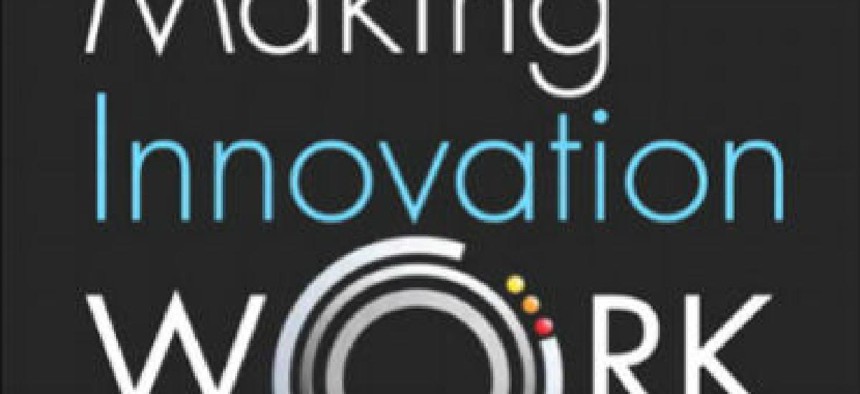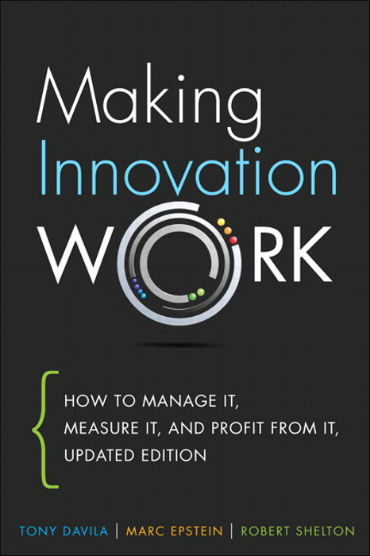Building the systems for innovation

Federal agencies can't operate like Silicon Valley startups, but even the largest organization can manage for great innovation.

This article is adapted from "Making Innovation Work: How to Manage It, Measure It and Profit from It," by Tony Davila, Marc J. Epstein and Robert D. Shelton.
The decisions you make regarding strategy guide where you focus your innovation efforts. The structure you put into place acts as the foundation for the innovation process. However, even with the proper strategy and structure in place, innovation could fail if your systems are inadequate. The management systems are the mechanisms that, to a great extent, make innovation happen.
In small organizations, innovation usually happens as a natural occurrence through the insight, talent and interaction of a small group of people. But as organizations expand, innovation no longer happens so naturally -- the right people may not interact, the information may not flow to the right places, and the motivation to take risks may diminish. Organizations as large as General Electric or Proctor & Gamble may develop silos -- compartmentalized departments that barely communicate with each other, much less strive to innovate.
This is why larger organizations need systems to manage innovation. Ignoring this and staying anchored in the idea that innovation naturally occurs lead to frustration and failure. The argument that large institutions are not able to innovate may reflect the lack of acceptance of this basic idea: Innovation has to be managed; it does not just "happen."
Many managers wrongly assume that structure and process are the natural foes of creativity. What they don't realize is that structure can enhance creativity if you build it and use it the right way.
Innovation systems fulfill five important roles:
* Efficiency. The first role of an innovation system is to increase the efficiency of the innovation process. The system needs to move great ideas from concept to commercialization with speed and minimum use of resources.
This role is especially relevant for incremental innovation, when following a defined set of stages and decision points accelerates time-to-market and increases the return on resources invested. This function is comparable to that of systems in manufacturing that codify the stages of the process (according to cost, speed or quality) to increase efficiency. However, innovation systems are not as detailed and structured as in the systems of an assembly line, where standard operating procedures dictate the actions of each person. Innovation systems -- even those where efficiency is paramount -- define relatively broad stages, leaving room for the team to maneuver.
* Communication. The second role of innovation systems is to create the appropriate lines of communication within the organization and with outside constituencies. As the innovation team demands specialized knowledge from other parts of the organization, systems facilitate timely access to it. Throughout the internal organization and with external partners involved with the innovation, information regarding the development of the innovation and its consequences needs to flow and be used.
Cross-functional teams (widely used in product development) enable communication through the different knowledge bases of team members or through a plan that describes when certain functions will join the team. Formalized systems also facilitate communication with internal and external partners through periodic planning and review meetings and explicit milestones. Microsoft and Compaq used these systems during software and hardware product development.
* Coordination. The third role of innovation systems is coordination between projects and teams with minimum effort. An example of a coordination system is a plan to allow parallel work on projects with minimal communication. For instance, offices in California, London and India that all use the same shared tracking system but at different hours can achieve three times the work in a day as other companies. Projects that run around the clock in different parts of the world are possible because of communication technology and the discipline that systems impose. Ensuring that resources are available on time is another coordination issue that systems facilitate.
* Learning. Systems establish a discipline to manage the knowledge that is constantly created in innovation. Systems can capture the information on the innovation performance throughout the life of the initiative (idea through commercialization) and make it available to the innovation team and management. The information can be used to identify problems and potential improvements.
More important, learning increases the understanding of the innovation process itself. Every time an innovation project is executed, something is learned about how to improve it, especially for incremental projects in which similar efforts are undertaken repeatedly.
Innovation systems are like software; new versions are periodically released to improve on previous versions. A system for capturing and coding learning enables that to happen. Knowledge is also generated about the business model, the technology and opportunities that are identified but cannot be pursued within the framework of the current project.
Knowledge may be relevant not only to the current project, but also to future projects. It needs to be retained to benefit the organization and enhance competitive advantage. It is often said, "If our company only knew what our company knows, many problems would not exist." Knowledge management systems facilitate remembering or knowing what you know.
* Alignment. The fifth role of innovation systems is to align the objectives of the various constituencies. People throughout an organization need to understand the strategy and its implications for operations. As an institution grows larger, senior management cannot rely on informal, social interactions as the vehicle to achieve this alignment of understanding and behavior. A system is needed to ensure consistency of message and inclusiveness.
Innovation systems also align organizational objectives with personal objectives. The information regarding the innovation performance needs to be communicated and compared to the innovation objectives. This allows people in the organization to assess how their actions fit the organization's innovation objectives. If the performance does not match the objectives, time is spent analyzing the system cause of the discrepancy. This gives people a better understanding of the linkages between innovation strategy and its operational context.
Properly designed systems can help bring together the right people and the right knowledge to create the activities required to make innovation happen.
NEXT STORY: Treasury official calls for quick Data Act demos


